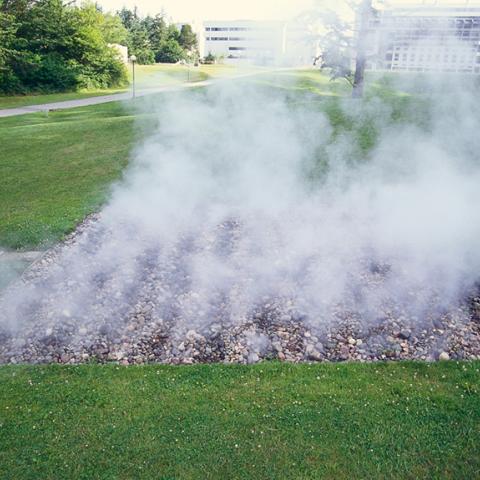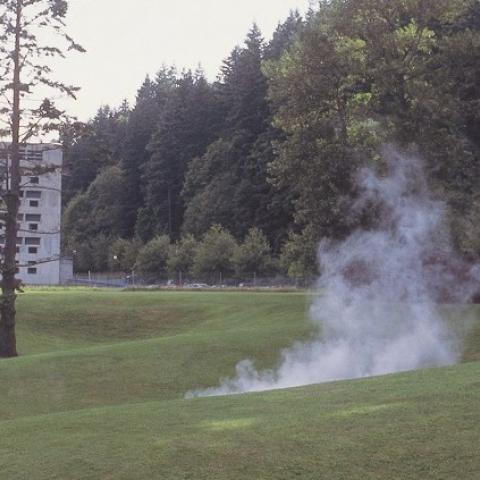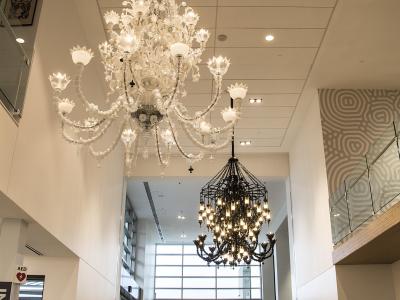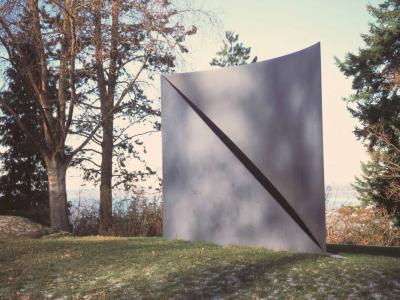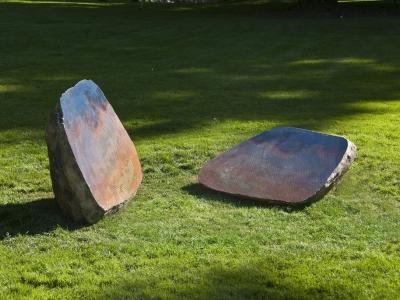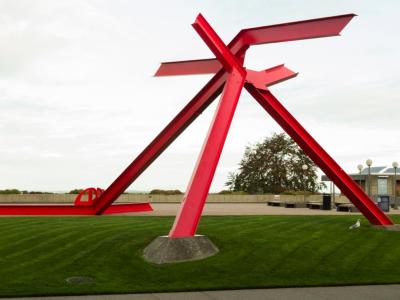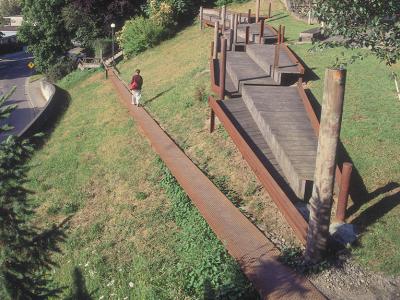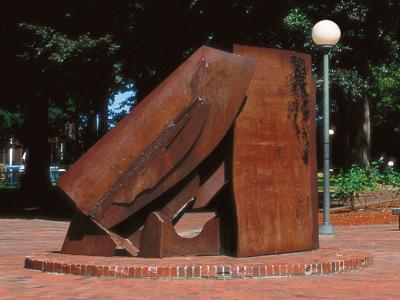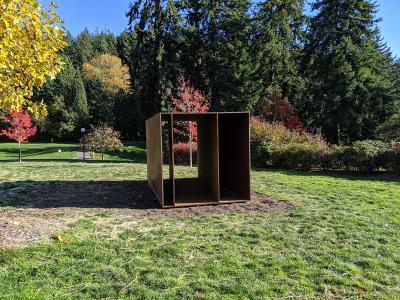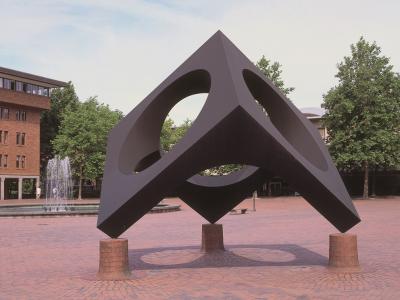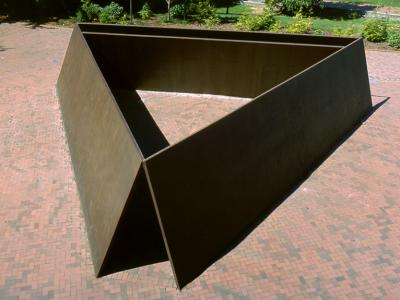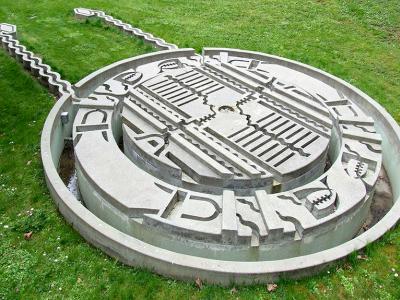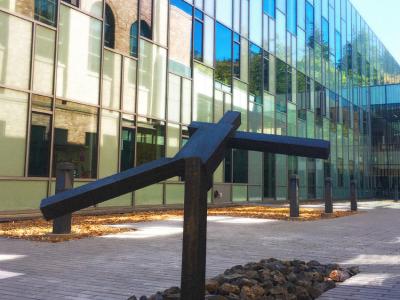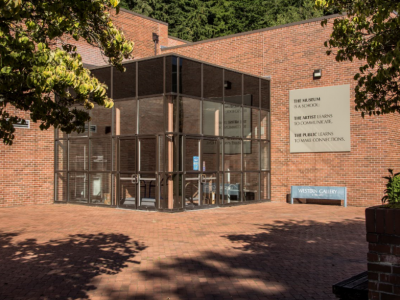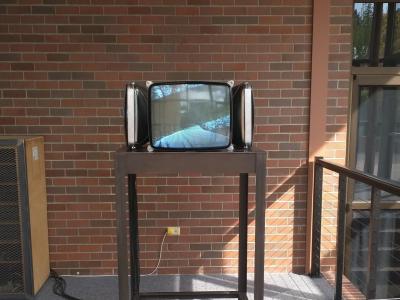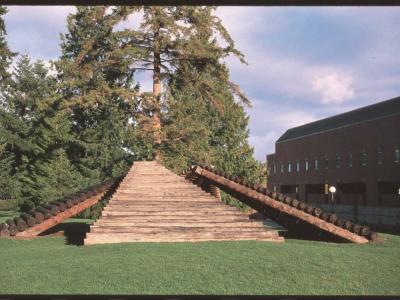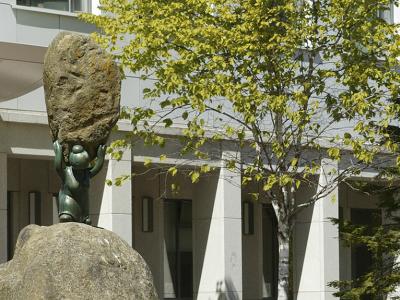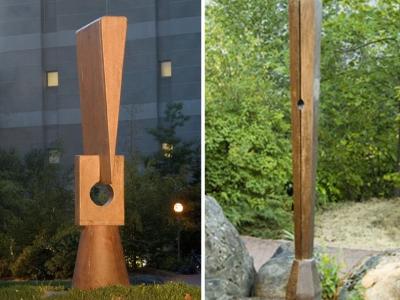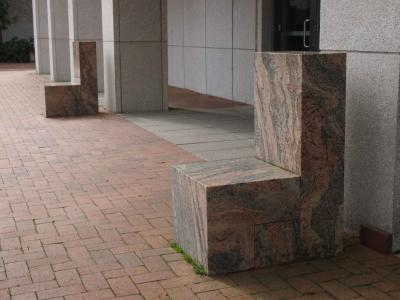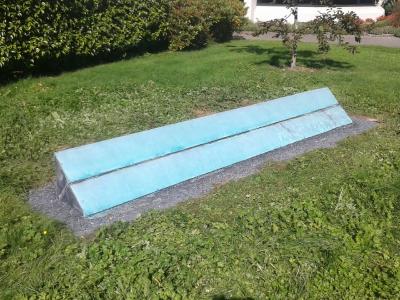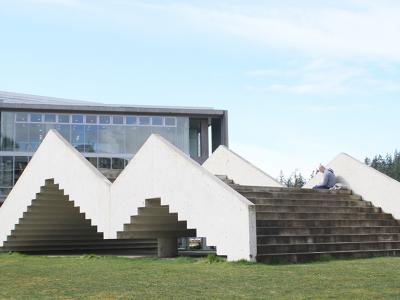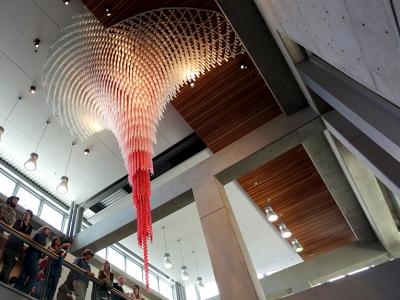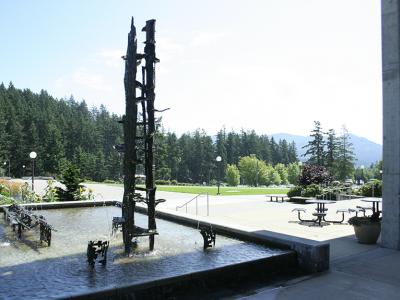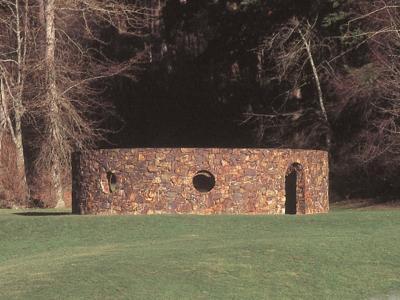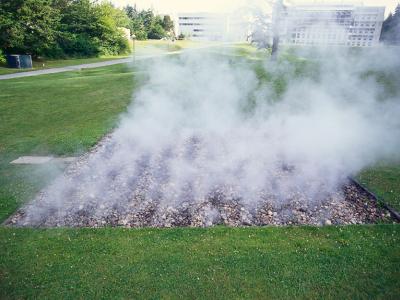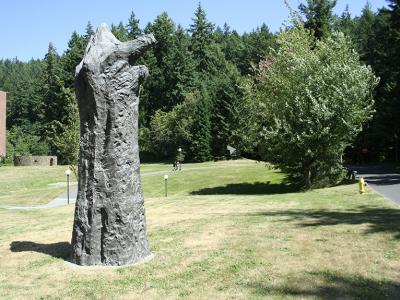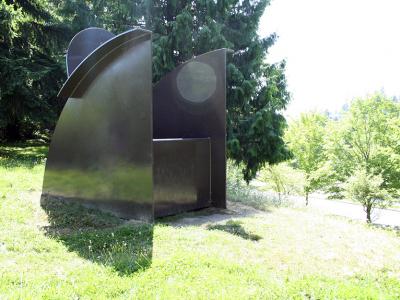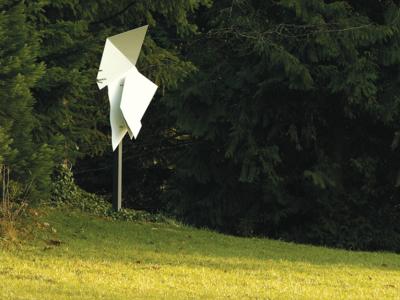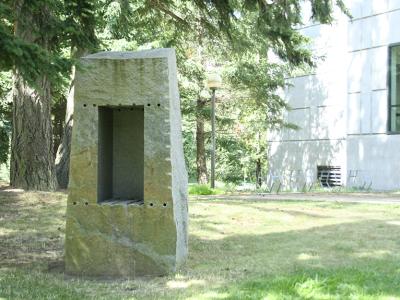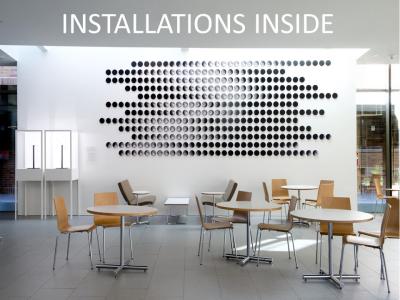Robert Morris, Untitled (Steam Work for Bellingham), 1971
Audio Description
Robert Morris, 1971, installed 1974.
Rock and steam. Rock 20' x 20' with variable height of steam.
Photo credit: Art on File, Seattle. The STEAM is on timer and comes on at 8-8:30 am, 12-12:30, and 5:30-6 pm
Art allowance from Central Cooling Plant construction funds. © Robert Morris/Artists Rights Society (ARS), New York.
Description
Known for his work emphasizing concept over aesthetics, for art as performance, and for art on the land, Robert Morris took advantage of this site. He selected landscape versus a peopled area, a hilly terrain to obscure the source, and the steam conduit system to Fairhaven College. Chance and environmental factors such as sunshine, wind, and fog affect the forms of the artist's material of steam. Morris also integrated into the visual image other sensual experiences such as sound, smell, and physical contact.
Morris' work, Untitled (Steam Work for Bellingham) (1971) is a special type of fountain that gurgles underground and swells to an amorphous column; then the misty cloud dissipates. Its point of origin was a U-shaped pipe above ground where steam escaped in one area from the University's heating system of underground pipes. In 1971, after participating in a symposium, Morris was commissioned to create his steam piece that was finally built in 1974.49 Morris re-planned this source of regulated but fluctuating power; he determined the amount of steam to be released, reconfigured its visual appearance, and re-sited the new work in the rolling landscape of south campus. When the fountain is turned off, only rocks fill his container, a plain square outlined by wood beams set in the ground. Natural environmental factors such as sun, wind, and condensation in the air affect the rate of evaporation and the shapes the steam will form. Economic factors such as energy conservation often erase the boundaries between those who love it and those who oppose it.
Full text
Since excess steam is also vented at the steam plant, the question might arise as to the significance of Morris' work. One answer lies in the convoluted statement made by Morris to a student reporter soon after the work was completed: ''It is work done, like all work, in the world-and partly because its audience has become much less end-directed, seeing life in terms of people and action and responding to life in a way formerly reserved for art." Translated in another way, Morris sees art as the result of work equivalent to the product of the laborer. He also feels that both artists and laborers share the same devaluation in the decline of industrial society. Therefore, his solution is to join his art product and their life's product in the same space or at a particular site so that the viewer feels a sense of uncertainty and resistance when the product's worth is questioned or when it evaporates. The second way to understand is to call attention to several of his other works, perhaps less abstract, which also embody this dualism of physical and mental time. For example, in Box with Sound of Its Own Making (1961, Collection Seattle Art Museum) and Fountain (1963), he combined both the aural and visual elements of work as he did in the steam piece's activity. In the former, he placed the recordings of the actual sounds of him sawing wood to make this studio piece inside a sealed box; in the latter, he hid the noise of a pump circulating water inside a galvanized bucket and hung it high on the wall. In Untitled (Steam Work for Bellingham) the labor is underground in the industrial pipes, but the physical intensity of the work is felt through the hissing sound and the wet sensation as the viewer actually takes time to walk into the cloud.
Since he has a background in dance, Morris likes to overlap the labor of the performers with the labor of the visual artists. For example, in his task-oriented performance, Site (1964), he dressed as a worker with a mask. Behind the paper mask any expression was concealed as he, the visual/performing artist and laborer, went about his workman-like activity of uncrating a square box and rearranging its slabs or sides. At the end he repeated his steps to box up the original object-a nude woman who represents both another type of real worker-a prostitute-and other examples of reclining nudes in past art. In the steam piece, Morris allows the viewer to step into the site of the worker and wear the mask of the steam. The same viewer is also veiled by the cloud and becomes the object of interpretation to anyone outside the box.
Another example of Morris' works helps to explain this statement about art and life and, as in the previous cases, what is developed in one medium is elaborated further in another. While art lovers would enjoy the steam pieces ability to regulate itself depending on the amount of heat generated at the University at different times of the year, the administrators see the need for conservation of energy and limit the work through an on/off policy. Ironically, one of Morris’ earlier works, Untitled (Performance Switch) (c. 1963), has an on/off mechanism. This oak file box with switch also has a velvet-lined lid with an inscribed mirror giving the instructions: ''To Begin Turn On - Continue Doing What You are Doing - Or Don't - Do Something Else. Later Switch May be Turned Off-After A Second, Hour, Day, Year, Posthumously."
Just as Morris highlighted mundane tasks in his performances - carrying things such as slabs or boards (Site, 1964), and walking on tracks or pouring liquids onto the floor (Waterman Switch, 1965)'' - he also began in 1967 to spread less than aesthetic materials such as thread waste, felt, and dirt on the art gallery's floor. At Western, Morris used steam and rocks but this time on the floor of the land. In his steam piece, as in the previous examples, he wanted to loosen up some old mechanisms of thinking, predetermined or static ideas about art fixed by institutions. He undermined the idea of a static object on a pedestal in a gallery. Like a bottle's con tents dripping down a body onto a floor or the circling and evaporating steam, he wanted art to transgress certain spaces. Most importantly, he did not want to hold the spectator back but rather put the spectator in a direct situation, on the same ground, so that he would have the physical experience of encountering the art.
Untitled (Steam Work for Bellingham) is the epitome of Morris' constant anxious investigation of the relation ship between body and mind, nature and culture. In its ''on'' position, the viewer experiences the duration of the piece and sensually feels his physical body in the natural landscape of rock and steam often found else where in the Northwest. Here, steam is like a trace or memory of the body in the world. In its ''off'' position, the viewer only has his memory of the work and how he experienced it. These subjective fragments form part of the history of the work or how others viewed it and interpreted it over time. Here, the rocks overlying the square also provide a concealed portal, whether gate or tombstone. Recently Morris stated, ''History: terra moto. A shuddering of earth and memory." As the steam piece oscillates, we feel that dread. We might see its labyrinthine substance as a strategy to make us think more deeply about how we act in private versus how we act in a public, cultural space. Or, we might view its cloud as the transitional space between life and death.
© Sarah Clark-Langager
